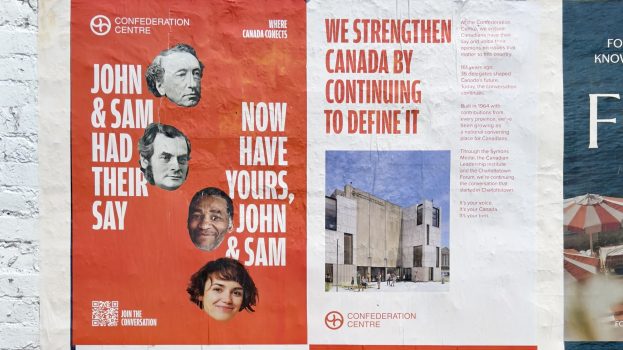More than two years after recreational cannabis was legalized for sale in Canada, many producers have been struggling to stand out with consumers. In an attempt to change that, Hexo is tackling a common consumer pain point that many brands have been reluctant to acknowledge.
Their weed hasn’t been very good.
Hexo is repositioning its UP Cannabis brand to highlight a higher THC value proposition, relaunching via a primarily digital advertising campaign this week that will focus on paid social and display ads, complemented by organic social media and in-store. The creative features consumer complaints from review websites, like a Montrealer saying she “smokes meat stronger than legal weed,” and Hexo promptly apologizing.
Angela Lariviere, Hexo’s SVP of marketing, tells strategy she believes it’s the only brand in the industry to take the “high road” (so to speak) and apologize on behalf of the entire industry with its relaunch. That’s not only to give the brand more differentiation, but address a consumer insight that has been largely ignored in the industry.
When recreational cannabis was legalized, a major goal was to eliminate the black market. A common marketing approach was trying to reach consumers that were unfamiliar with cannabis by educating them on when more accessible product offerings would be best consumed and for what effect. This was also to take a cautious approach to marketing regulations, which prohibit evoking “a way of life…including glamour, recreation, excitement, risk or daring,” making focusing on product features and occasions the safer approach.
But Lariviere points out that people who had utilized the illicit market tended to be very experienced cannabis consumers, who knew the ins-and-outs of what they wanted and were especially interested in high-potency, high-quality offerings. They were also the ones most likely to be disappointed by the offerings on the legal market.
“We’re learning now that legalizing cannabis represented only the
The UP brand had already evoked an expression of Canadiana, and that Hexo knew it wanted to build on that proposition, Larivier says. “So, we did the most Canadian thing we could do: we said, ‘we’re sorry’ and we made a promise to make it right.”
And from that seriousness, a funny campaign was born. Lariviere says those who have seen the campaign so far in testing have appreciated both the humour and the honesty in the campaign.
The Hexo target segment is primarily between the ages of 25 and 40, with a mostly equal split on gender. And when it comes to whether the brand is a challenger or leader, Lariviere says it’s a bit of both and that Hexo fully expects other competitors to follow with a similar THC potency profile.
This marketing campaign came as a result of strategic and creative thinking from agency Sister Merci, which worked with Hexo’s marketing and product development teams.
























